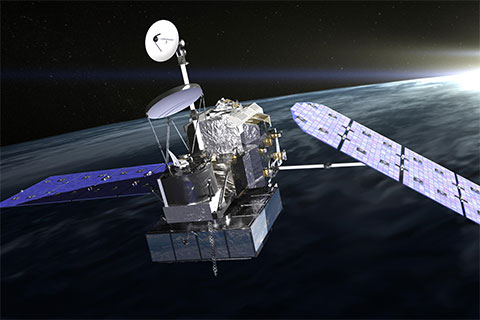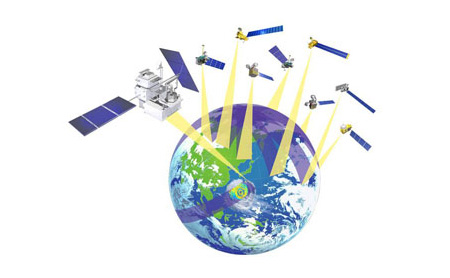About Global Precipitation Measurement/Dual-frequency Precipitation Radar (GPM/DPR)

|
Global Precipitation Observation at Three Hour Intervals with GPM Core Satellite and Constellation SatellitesThe 21st century is often called "the century of water." Water is an essential element of the Earth's environment and is indispensable for our life and economic activities. Many places in the world now face water problems, such as water shortages and floods, which can cause food shortages, epidemic diseases, and so on. In addition to these problems, global warming and climate change affect the global water cycle and result in abnormal weather, such as frequent heavy rains and droughts. In order to solve these problems, we urgently need to accurately determine the rainfall distribution, which is the input to water resources, and to improve the techniques of predicting and preparing for abnormal weather. |
|---|
Project Topics
indexGlobal Extreme Heavy Rainfall and Drought detected by GSMaP ∼ "JAXA Climate Rainfall Watch" website is now available∼
|
JAXA has been addressing global precipitation-related issues under the Global Precipitation Measurement (GPM) Mission by utilizing the 3D precipitation product "Dual-frequency Precipitation Radar (DPR)" onboard GPM core observatory and multi-satellite precipitation product "Global Satellite Mapping of Precipitation (GSMaP)".We are pleased to inform that the new website called "JAXA Climate Rainfall Watch" is now available, which provides information about extreme heavy rainfall and drought ... |
Press Release
-
- February 28, 2014 (05:20)
- Launch Result of H-IIA Launch Vehicle No. 23 with GPM Core Observatory onboard
-
- February 28, 2014 (05:20)
- NASA and JAXA Launch New Satellite to Measure Global Rain and Snow
-
- February 26, 2014 (14:00)
- Launch Time and Window of H-IIA Launch Vehicle No. 23 with GPM Core Observatory onboard
Tropical rainfall measurement
|
Japan worked with NASA to measure tropical and subtropical rainfall through the Tropical Rainfall Measuring Mission (TRMM). GPM is designed to make more accurate and frequent observation of tropical rainfall by expanding its observing areas to higher latitudes. |
GPM Project
|
GPM is a unique and complex program. GPM is composed of one core satellite and approximately eight constellation satellites. The core satellite carries a dual-frequency precipitation radar (DPR) and a microwave radiometer, and the constellation satellites carry microwave radiometers. Led by JAXA and NASA, the GPM program will be conducted in cooperation with NOAA, CNES, ISRO, China, etc. JAXA is responsible for launch (TBD) and development of a key instrument, DPR, in cooperation with the National Institute of Information and Communications Technology (NICT). NASA will develop the core satellite bus and its microwave radiometer. Other partner countries and organization are responsible for the development of the constellation satellites. Multiple number of constellation satellites will enable global measurement of precipitation about every three hours. |
 |
|---|
Contents

- Aug. 6, 2008
- To Preserve Our Earth